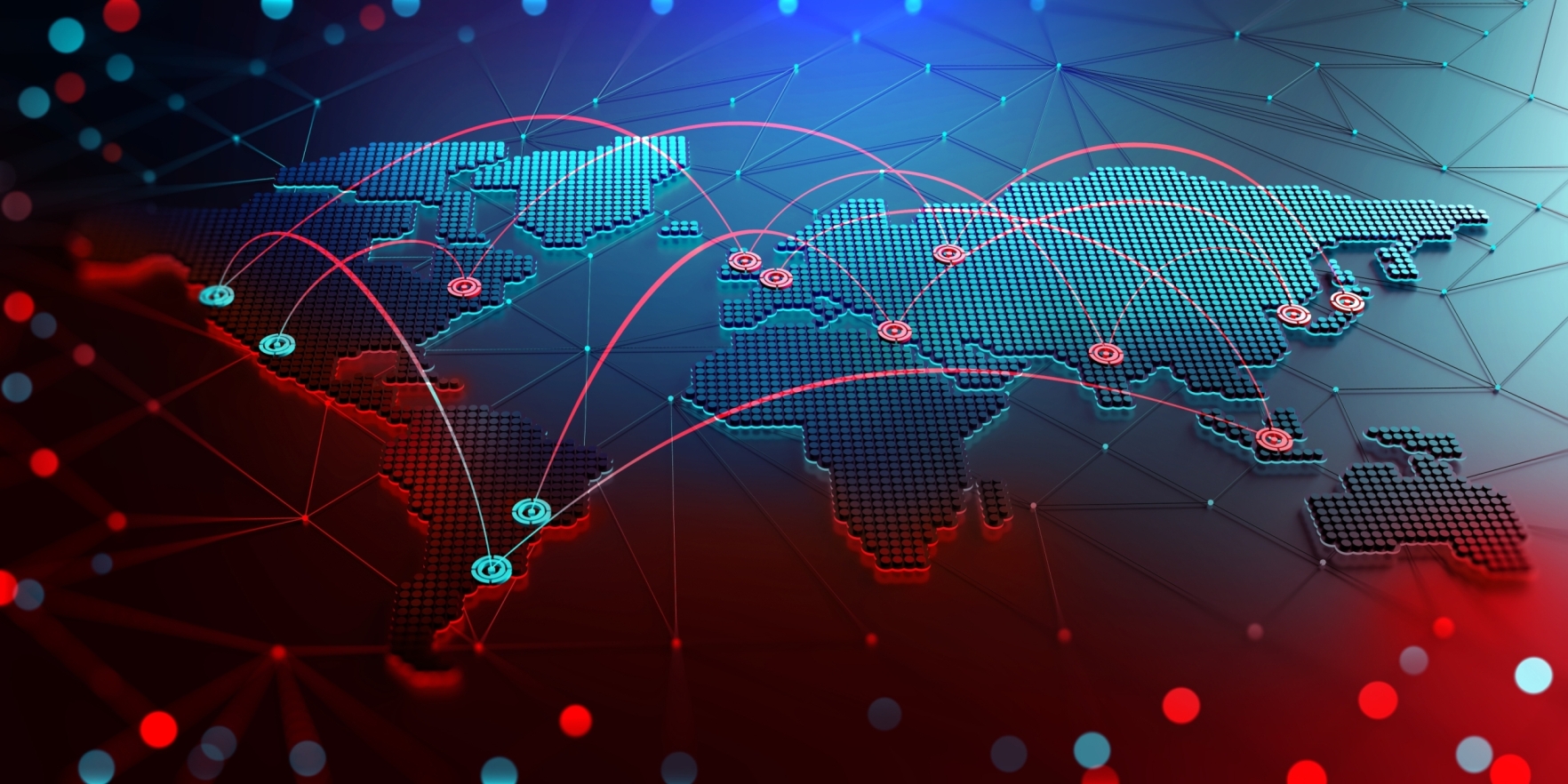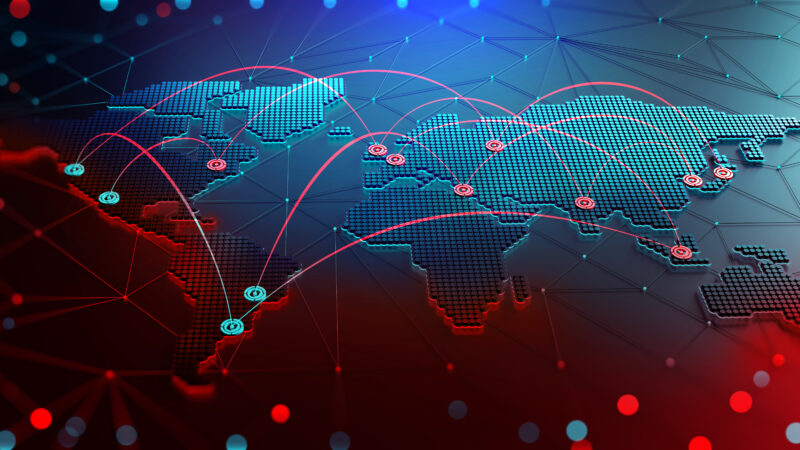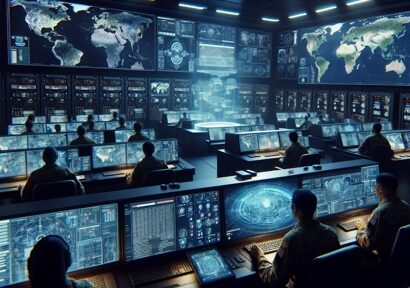Abstract: Ideated last year, the quadrilateral grouping in the Middle East involving the US, Israel, India, and UAE was largely publicised as the ‘Middle Eastern Quad’ to counter-weight China in the western Indian Ocean. The group has now been named I2U2. While the China angle seems to exist covertly, the quadrilateral aims to achieve higher goals involving international, regional, and national concerns. Much beyond countering China, I2U2 seems to focus on reaping the benefits of the Abraham Accord, in the US repositioning to achieve sustainability and cater to global food security, and facilitate trade, economics, and commerce holistically. In short, the group aims to achieve international, regional, and national goals for better posturing in the world system. With India’s vibrant market and large human capital, America’s political commitment, UAE’s financial capital, and Israel’s technological expertise, if emboldened, I2U2 has the potential to become a strategic bloc.
Problem statement: If I2U2 is merely an economic cooperation, how does it benefit the partners? Are there any strategic objectives to be fulfilled through I2U2? How does it benefit India? Why is the US interested?
Bottom-line-up-front: I2U2 is touted as an ‘international forum for economic cooperation’; however, the minilateral also seems to be a covert strategic alliance aimed at checking Chinese influence in the region. However, focusing on economic and non-conventional aspects ascertains the group’s sustainability and makes it result-oriented.
So what?: I2U2 intends to focus on economic cooperation; it acts as a counterweight to China to some extent but in an indirect form. Commercial, economic, and trade-related quadrilateral groupings are more effective tools than direct confrontation with a country. Thus, continued engagement needs to be emboldened by higher and equal stakes by all the partners to make the partnership sustainable. Economic factors are far more binding factors to meet strategic goals; through I2U2, the partnering countries aim to achieve that goal. Such cooperation is productive, desirable, and far more result-oriented. In that context, I2U2 integrates the region, facilitates economic engagements, and helps covertly counter China’s strategic footprint in the Middle East.

Source: shutterstock.com/Yurchanka Siarhei
India – a Regional and Global Power
With vast human capital owing to the country being home to 18 per cent of the world’s population and escalating economic growth, which ranks it as the sixth-largest global economy, India’s prowess as a regional and global player is well recognised by traditional powers, especially the US. Americans have realised that they may show discomfort towards India’s independent and non-aligning decisions on some international affairs, but they cannot possibly ignore the country.[1] Whether it was on the reconstruction of Afghanistan, playing a role in the Middle East Peace process, in the Indo-Pacific for regional peace and to avoid China’s expansionism, or on sanctioning Iran, the US has actively sought Indian assistance in these strategic matters.
In the same light, even though the US showed its displeasure regarding India’s neutral stance in the ongoing Russia-Ukraine crisis, the country possibly cannot afford to not engage New Delhi at various other forums, most specifically in the eastern Indian Ocean. I2U2– named after the partnering countries’ first initials – India, Israel, US, and UAE – is an extension towards the western side of the Indian Ocean, not being an exception to the general rule. The strategic connotation towards deliberately spelling out the name of the minilateral as I2U2 suggests the partners’ reluctance to outrightly challenge the East Asian dragon, the People’s Republic of China, given their individual trade and commercial engagements with China.
I2U2– named after the partnering countries’ first initials – India, Israel, US, and UAE – is an extension towards the western side of the Indian Ocean, not being an exception to the general rule.
Cultivating its proxies in the region and strengthening its position while garnering Chinese support as a strategic and defence partner, Iran remains immune to any callous strategy against it in the Middle East. Moreover, given India’s fresh bolstering of relations with the Persian state, New Delhi is mature enough not to make a strategic mistake of joining the anti-Iran bloc. Given its geostrategic significance, Iran and India are longstanding partners in Afghanistan reconstruction to safeguard individual interests. Likewise, engaging with Tehran is crucial for New Delhi to develop its Chabahar port. The development of Chabahar is a strategic initiative for India aimed partially at keeping a closer look at the growing China-Pakistan Economic Project at Gwadar.[2]
I2U2 – A Trade-Related Cooperation
The partners have noted that their individual relations with China and, in India’s case with Iran as well, a direct confrontation will be unyielding, and therefore to avoid any misunderstanding, the new nomenclature endorses non-conventional, economic, food security, and trade-related cooperation. Most importantly, the urgency to name the partnership on the existing members despite reports of probable inclusion of others in the region and outside (not officially confirmed, though) further affirms that the group was providing a clear message that it does not intend to counter China and Iran. However, it is worth considering whether this is the case.
The unprecedented partnership whiffs on countering the Chinese “marching westward” policy as propounded by eminent Scholar Wang Jisi. The policy provokes Communist China to expand its relations towards the Western Indian Ocean and to include the Middle East, Africa, and Latin America in its geostrategic balancing of the east and the west. Thus, by engaging major regional players, such as Israel, the UAE, and India, America aims to covertly secure the Middle East from the dragon’s expanding strategic footprint.[3]
In addition, President Biden’s tripartite visit to the Middle East during 13-16 July involved an I2U2 high-level virtual meet, a meeting with the Palestinian Authority, and his visit to Jeddah to steer GCC+3 summit (involving six Gulf Cooperation Council (GCC) countries and Egypt, Iraq, and Jordan), further suggests that the US is repositioning itself in the region after showing withdrawal symptoms earlier.[4] Despite strained relations with Saudi Crown Prince Mohammed bin Salman or popularly known as MBS, Biden’s readiness to engage MBS is a strategic move to stop China from filling the vacuum already created by the US. While the Chinese showed no interest in dealing with the region in a manner akin to the US, its fast penetration in regional matters and regional economics is worrisome to the US. Similarly, for India, any Chinese expansionism in the region challenges its unique selling point (USP) of providing vast human capital and a vibrant market for Middle Eastern goods.
Despite strained relations with Saudi Crown Prince Mohammed bin Salman or popularly known as MBS, Biden’s readiness to engage MBS is a strategic move to stop China from filling the vacuum already created by the US.
Thus, similarly to other multilateral dialogues and initiatives steered by President Biden after assuming office in January 2021, such as the grouping AUKUS, which is an abbreviation for Australia, UK, and the US, quadrilateral dialogues with Afghanistan, Pakistan, and Uzbekistan, and strengthening and deepening of Quadrilateral Security Dialogue (QUAD); I2U2 also seems to be one of the covert pre-emptive measures to check Chinese infiltration.[5] In that context, engaging India on the eastern and western sides of the Indian Ocean is a smart strategy as the country has a regional outreach, influence and enjoys friendly clout.[6]
More than China
Apart from China-centric concerns, the tripartite arrangement during his maiden visit to the region as America’s president is reasoned around other regional and global challenges such as the growing energy crisis in the aftermath of the ongoing Ukraine crisis, fresh stalemate to the Iranian nuclear deal, and regional security absence to name a few.
Likewise, for India, Chinese expansion is a matter of concern but a subdued one. There are several deliverables that the partnership offers which are much more attractive. First, India’s willingness to engage Israel and the UAE provides it leverage to reap the benefits of the Abraham Accord. New Delhi has already signed a comprehensive economic partnership agreement (CEPA) with Abu Dhabi and a Free Trade Agreement (FTA). It also aims to sign a similar FTA with Israel very soon. In that light, I2U2, given that it is based on economic integration and prosperity, is a beneficial multilateral partnership for India, especially in terms of increasing its commercial transactions with the partners along with defence products.[7]
Second, it helps New Delhi mend its relations with Washington, especially after a coldness regarding the former’s seemingly neutral stand on the Russia-Ukraine crisis. Akin to the post-Cold War situation, the current crisis will lead to India’s leading defence partner, Russia’s diplomatic isolation. Thus, guided by national interests, diversification of its defence imports sources and expanding the volume of such imports with the US and Israel is in India’s interest. A strengthened I2U2 facilitates such objectives. Thus, apart from catering to food security needs, these issues are of primary concern to New Delhi.
Akin to the post-Cold War situation, the current crisis will lead to India’s leading defence partner, Russia’s diplomatic isolation.
Third, securing its energy requirements at affordable prices is another concern that involves Indian interest in the minilateral. Lastly, the Ukraine crisis has led to severe food shortages in the region as well as globally. While India began to cater to the supply vacuum, in the current circumstances, owing to large domestic requirements, Indian hands are metaphorically tied in terms of food exports. Its attempt to supply wheat to Egypt, Turkey, and UAE has been recently met with criticism domestically and in the region for not catering sufficiently to its own domestic requirements and quality checks and controls.[8] By multilaterally engaging with Israel, US and UAE, India aims to get a suitable innovative agri-tech partner, a facilitator, and a vibrant market to supply its food products, respectively.
I2U2 – An Holistic Enhancement of Bilateral Engagements
While China is a concern for the US and muted one for India, it is a profitable partner for both UAE and Israel, then why are these countries partnering? One, it strengthens the Abraham Accords and provides new avenues for furthering engagements, especially as both the countries are important regional players. Two, for Israel, the multilateral initiative with US’ “iron clad” support provides a major diplomatic outreach to the region; for UAE, similarly, it increases its technological, innovative, and trade relations with Israel and caters to its food security challenges.
Two days before the commencement of the Summit, India’s Ministry of External Affairs released a list of agenda items to be discussed, which included three glaring points:
- joint projects taken by the members will serve as a model for economic cooperation and will offer opportunities for the business community and workers of the member states;
- six areas of mutual cooperation were identified, namely, water, energy, transportation, space, health, and food security[9]; and
- mobilising private sector capital and expertise for modernised infrastructure including connectivity, low carbon development, public health including vaccines, solutions for waste management, and connecting start-ups to I2U2.[10]
Six areas of mutual cooperation were identified, namely, water, energy, transportation, space, health, and food security.
Above all, for all the partners, the initiative provides a holistic enhancement to most bilateral engagements. As in a business deal, I2U2 primarily aims to embolden each partner’s stake in the initiative. Increasing stakes means increasing engagements, and by doing so, it indirectly aims at reducing Chinese clout. With these new dialogues and initiatives, the US is probably positioning itself to respond to the Chinese expansionism while adopting the latter’s winning without fighting strategy. On balance, I2U2, an economic and commercial bloc, does involve a covert strategic component; nevertheless, it will remain a minilateral partnership, at least in the initial years. Cost-benefit approach dictates that such an arrangement is far more desirable and result-oriented.
Dr. Manjari Singh is an Associate Fellow at an Indian Army Think Tank, Centre for Land Warfare Studies (CLAWS), New Delhi. She holds a doctorate from Jawaharlal Nehru University in West Asian Studies on Sustainable Development in Jordan. Dr. Singh is a Ryoichi Sasakawa Young Leaders Fellowship Fund (SYLFF) Fellow. She has co-authored a book titled Persian Gulf 2018: India’s Relations with the Region (Palgrave Macmillan, 2019) and co-edited Islamic Movements in the Middle East: Ideologies, Practices and Political Participation (Knowledge World, 2019) and National Security Challenges: Young Scholars’ Perspective (Pentagon Press, 2020).
Her research papers have appeared in many international & national journals, edited volumes, and think tanks such as Mediterranean Quarterly, Migration and Development, Contemporary Review of the Middle East, Manohar Parrikar Institute for Defence Studies and Analyses, Observer Research Foundation, Washington Institute for Near East Policy, Inside Arabia etc. She is regularly interviewed by international media on various aspects of Middle Eastern Affairs. The views contained in this article are the author’s alone and do not represent the views of CLAWS.
[1] Eric Martin and Sudhi Ranjan Sen, “U.S. criticizes India on Russia Talks as Lavrov visits Delhi,” Bloomberg, March 31, 2022, last accessed July 6, 2022, https://www.bloomberg.com/news/articles/2022-03-31/u-s-criticizes-india-over-russia-talks-as-lavrov-visits-delhi; Kanishk Tharoor, “India is warming up to Israel, but Americans are growing sceptical of Tel Aviv,” The Hindustan Times, July 3, 2017, last accessed July 6, 2022, https://www.hindustantimes.com/columns/india-is-warming-up-to-israel-but-americans-are-growing-sceptical-of-tel-aviv/story-XTaNs2uejFuSjhoRGJTxSJ.html.
[2] Manjari Singh, “Chabahar Port Imperative,” in Kabir Taneja (ed.) Iran Under Ebrahim Raisi: The View from India, Observer Research Foundation, Special Report No. 154, pp. 5-9, August 2021, last accessed July 6, 2022, https://www.orfonline.org/wp-content/uploads/2021/08/ ORF_SpecialReport_154_Iran.pdf.
[3] Rajeswari Pillai Rajagopalan, “A Quad for the Middle East?,” The Diplomat, October 22, 2021, last accessed July 6, 2022, https://thediplomat.com/2021/10/a-quad-for-the-middle-east/.
[4] William F. Wechsler, “No, the US shouldn’t withdraw from the Middle East,” The Atlantic Council, June 24, 2021, last accessed July 6, 2022, https://www.atlanticcouncil.org/in-depth-research-reports/issue-brief/no-the-us-shouldnt-withdraw-from-the-middle-east/.
[5] Jyoti Malhotra, “Why US and India are taking on China with a ‘Middle Eastern Quad’,” The Print, October 19, 2021, last accessed July 6, 2022, https://theprint.in/opinion/global-print/why-us-and-india-are-taking-on-china-with-a-middle-eastern-quad/752775/.
[6] Guy Burton, “No, the ‘Middle East Quad’ is not Anti-China,” The Diplomat, October 29, 2021, last accessed July 6, 2022, https://thediplomat.com/2021/10/no-the-middle-east-quad-is-not-anti-china/.
[7] Rejaul H. Laskar, “UAE Trade deals with India, Israel hold potential for extensive trilateral cooperation: Naor Gilon,” The Hindustan Times, May 31, 2021, last accessed July 6, 2022, https://www.hindustantimes.com/india-news/uae-trade-deals-with-india-israel-hold-potential-for-extensive-trilateral-cooperation-naor-gilon-101654013289400.html.
[8] Vignesh Radhakrishnan and Jasmin Nihalani, “India looks to fill wheat granaries depleted by Ukraine war in many countries,” The Hindu, April 2, 2022, last accessed July 6, 2022, https://www.thehindu.com/news/national/india-looks-to-fill-wheat-granaries-depleted-by-ukraine-war-in-many-countries/article65284498.ece; Manoj Nair, “UAE, Saudi Arabia will still get wheat from India despite export ban – and foodstuff retailers are relieved,” Gulf News, May 20, 2022, last accessed July 6, 2022, https://gulfnews.com/business/retail/uae-saudi-arabia-will-still-get-wheat-from-india-despite-export-ban—and-foodstuff-retailers-are-relieved-1.1653019470179.
[9] News18, “PM Modi to Join Biden, Leaders of Israel & UAE for first ‘I2U2’ Meet Today: Here’s What’s on Agenda,” July 14, 2022, last accessed July 14, 2022, https://www.news18.com/news/india/pm-modi-to-join-biden-leaders-of-israel-uae-for-first-i2u2-meet-today-heres-whats-on-agenda-5550097.html.
[10] Ministry of External Affairs (MEA), “First I2U2 (India-Israel-UAE-USA) Leader’s Virtual Summit,” Press Release, July 12, 2022, last accessed July 14, 2022, https://mea.gov.in/press-releases.htm?dtl/35489/First+I2U2+IndiaIsraelUAEUSA+Leaders+Virtual+Summit.






